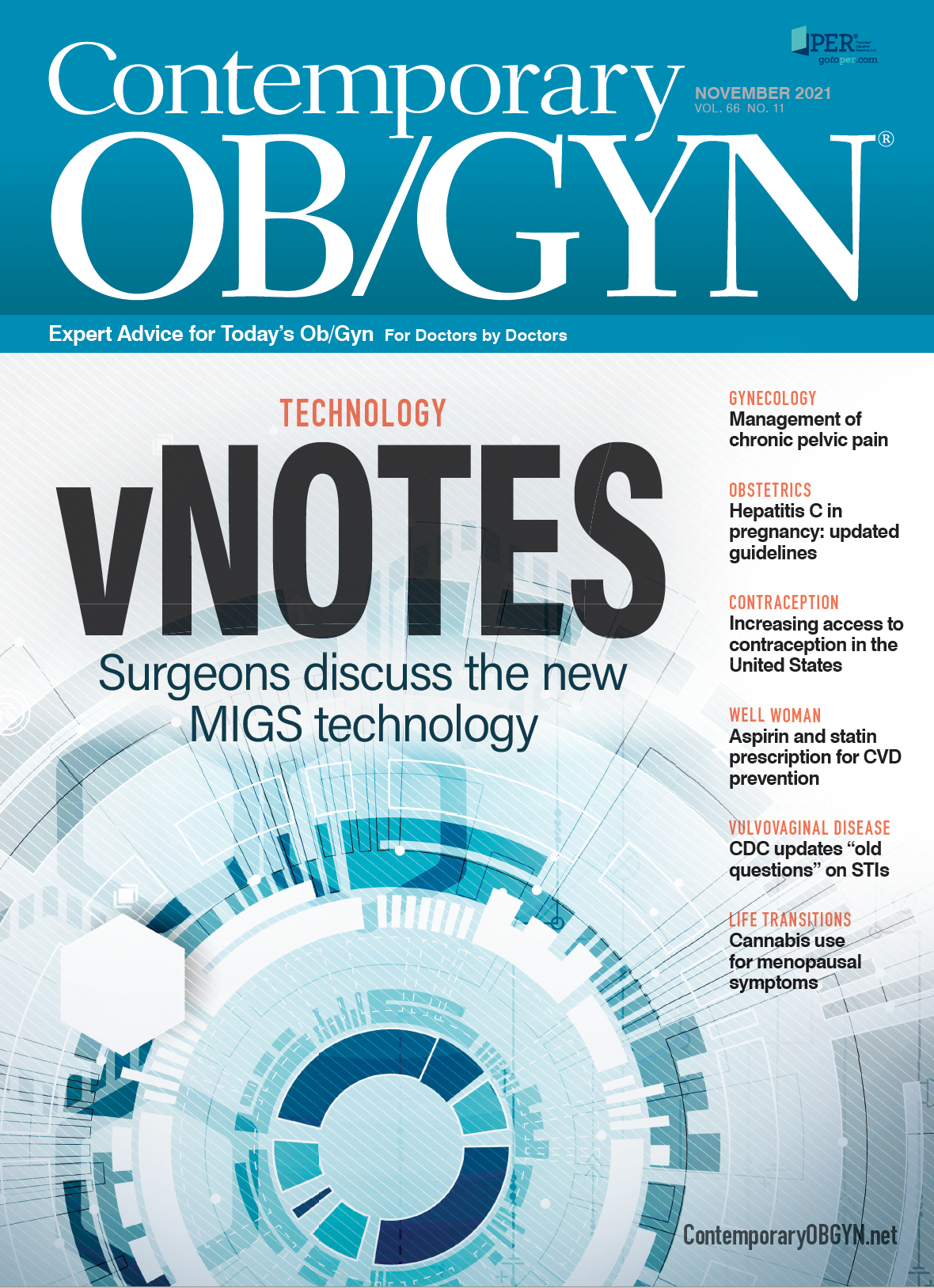vNOTES: where does it fit in the gynecologic surgery armamentarium?
The reality is that traditional laparoscopic surgery provides excellent outcomes, great surgical exposure, and the flexibility to tackle almost any clinical situation. As such it is a high bar to overcome—vNOTES is essentially single port vaginal surgery.
For this month’s edition of Contemporary OB/GYN®, we convened a group of gynecologic surgeons to discuss their experience using vaginal natural orifice transluminal endoscopic surgery (vNOTES) in gynecologic surgery.
vNOTES is in some respects a hybrid between NOTES and single port surgery, both of which became very popular 10 to 15 years ago.1 NOTES procedures were performed through the vagina, stomach, and rectum and mostly by general surgeons.
A lot of innovation took place with several novel instruments that had been developed for suturing and retraction. However, enthusiasm gradually waned becasue of several factors; these included reimbursement issues because insurance companies considered the approach experimental. Additionally, surgeries were prolonged, and technically demanding and required extra equipment that wasn’t always available.
Single port surgery experienced a similar evolution, with initial enthusiasm, then a decline, although there are still surgeons who offer this procedure to patients. Single port surgery using traditional laparoscopic instruments is challenging because of instrument clashing, and patient outcomes did not seem to differ from those of traditional laparoscopic surgery.1 Robotics companies have developed solutions that enable surgeons to triangulate instruments with greater ease, so perhaps we will see a resurgence in enthusiasm for single port surgery.2
I jumped on the single port/NOTES bandwagon several years ago and developed a procedure called orifice assisted single incision surgery (OASIS).3 This was an attempt to decouple the optical access from the operating instruments. It held some promise initially but proved to be logistically difficult because of a lack of appropriate equipment and, more importantly, no apparent difference in patient outcomes. I therefore jumped off the single port/NOTES bandwagon shortly thereafter.
The reality is that traditional laparoscopic surgery provides excellent outcomes, great surgical exposure, and the flexibility to tackle almost any clinical situation. As such it is a high bar to overcome—vNOTES is essentially single port vaginal surgery. Its advantage is that vaginal access is larger than with a traditional single port incision and therefore instruments can be spaced farther apart, reducing instrument clashing. vNOTES also provides an excellent natural orifice extraction port when dealing with a fibroid uterus or adnexal masses. The absence of a 2.5- to 3-cm umbilical incision in vNOTES is also advantageous, both cosmetically and because of elimination of the subsequent risk of umbilical hernia.
vNOTES does have some drawbacks, however. A bit of a learning curve exists in the setup of instruments, as well as in working at an upside-down angle. The procedure is also not universally applicable, such as with an obliterated posterior cul-de-sac because of stage 4 endometriosis, and with suture-intensive procedures, such as extensive myomectomy, which are not well suited for this method.
Where does vNOTES fall in the armamentarium of the gynecologic surgeon? It seems like an ideal procedure for surgeons who are used to performing vaginal hysterectomies and laparoscopically assisted vaginal hysterectomies. Surgeons with experience with single port surgery will probably also have an easier time transitioning to this procedure. We require more high-quality evidence (randomized controlled trials) to compare vNOTES to other modes of access, such as total vaginal hysterectomies and total laparoscopic hysterectomies.
Once we have this evidence and more clinical experience, we will see where vNOTES falls and whether it is just a temporary “fad” like NOTES or gains wide acceptance among gynecologic surgeons for certain procedures, such as hysterectomy and adnexectomy.
Time will tell, but the early results are certainly encouraging.4
- References
Siddaiah-Subramanya M, Tiang KW, Nyandowe M. A new era of minimally invasive surgery: progress and development of major technical innovations in general surgery over the last decade. Surg J(N Y). 2017;3(4):e163-e166. doi:10.1055/s-0037-1608651 - Misal M, Magtibay PM, Yi J. Robotic LESS and reduced-port hysterectomy using the da Vinci SP surgical system: a single-institution case series. J Minim Invasive Gynecol. 2021;28(5):1095-1100. doi:10.1016/j.jmig.2020.08.009
- Einarsson JI, Cohen SL, Puntambekar S. Orifice-assisted small-incision surgery: case series in benign and oncologic gynecology. J Minim Invasive Gynecol. 2012;19(3):365-368. doi:10.1016/j.jmig.2011.12.017
- Housmans S, Noori N, Kapurubandara S, et al. Systematic review and meta-analysis on hysterectomy by vaginal natural orifice transluminal endoscopic surgery (vNOTES) compared to laparoscopic hysterectomy for benign indications. J Clin Med.2020;9(12):3959. doi:10.3390/jcm9123959

